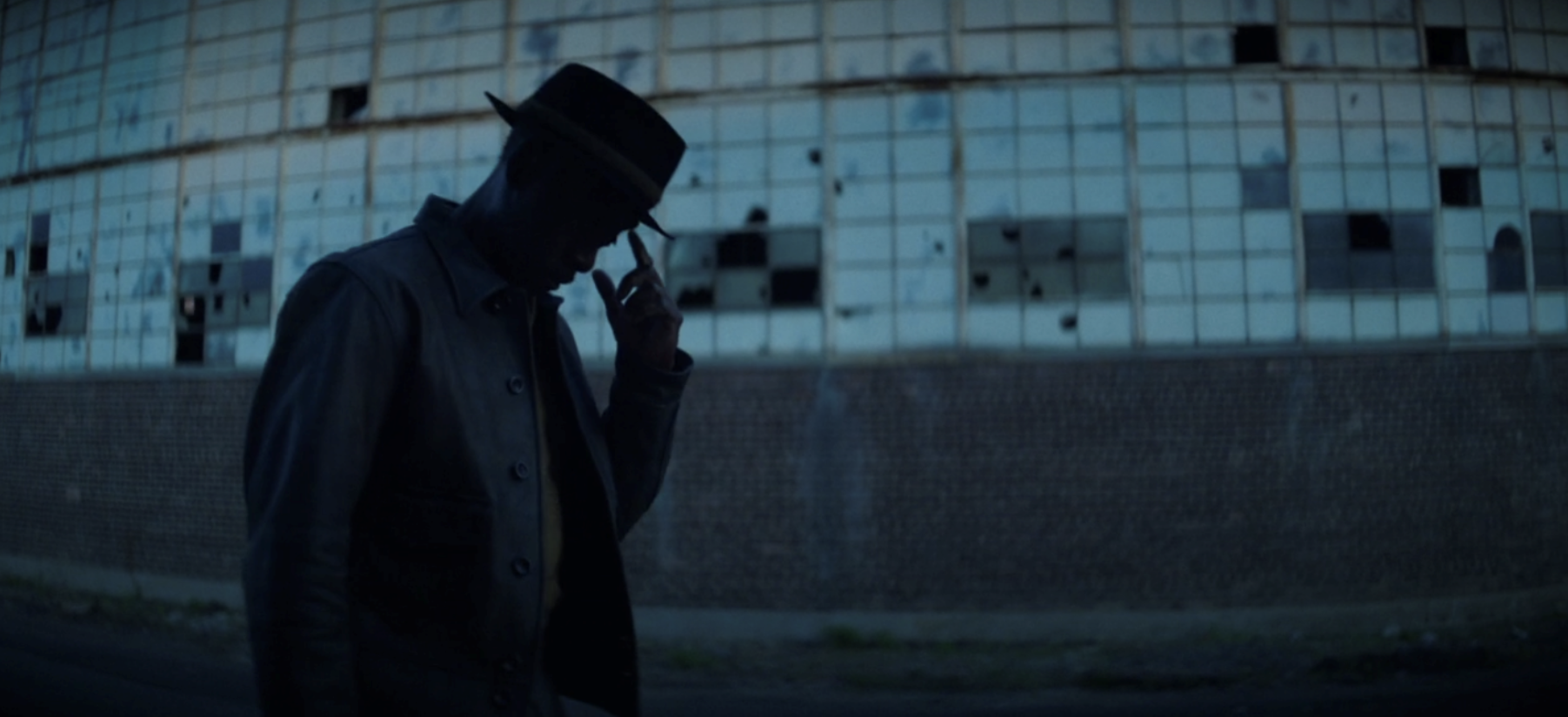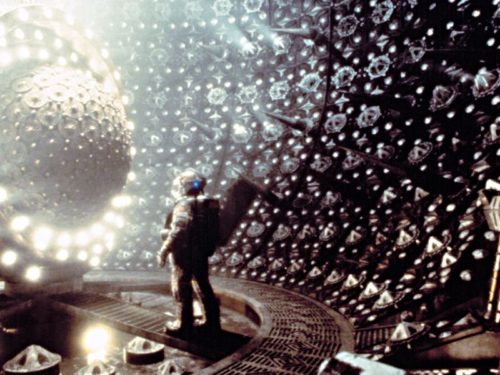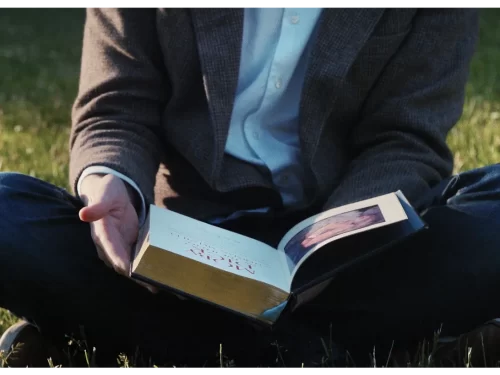Steven Soderbergh’s neo-noir crime saga creates a shape-shifting world through its off-kilter, deliberately imperfect visual style
Peter Andrews doesn’t exist. Neither does Mary Ann Bernard. He’s listed as director of photography and she as editor of No Sudden Move (2021). Pete and Mary Ann are aliases of director Steven Soderbergh, pulling triple duty on his latest twisty neo-noir crime saga. Why the ruse? It might be modesty, not wanting his name repeated in the credits to the point of parody. He’s spoken of being wary of branding, in that becoming a brand himself is a dangerous prospect. So, muddying the paper trail might be an effort to stave off notoriety and avoid getting painted into a corner. The pseudonyms could be chalked up to self-awareness about the movie’s unorthodox surface texture, a tacit acknowledgement that he mucked around with the style of the film and maybe he needs a couple patsies. The nom de plumes give a bit more freedom to play in the sandbox. Soderbergh also seems like a pragmatist, so don’t discount their value as guild loopholes. But the best answer is probably that it’s just another layer of audience deception.
Not that he needs to hide. After all, he has the triple crown of a Palme d’Or, an Oscar, and an F CinemaScore to his name. Plus he has the added distinction of being spoofed by Documentary Now! Soderbergh has evolved into a restless and increasingly experimental filmmaker, the kind of artist who sets up challenges for himself for kicks: amassing legions of movie stars and shellacking the cinematography; opting for consumer-grade camera technology; working within monochrome palettes; casting famous non-actors in lead roles. Like Hitchcock, he exploits the magnetism, familiarity, and wattage of A-list movie stars as part of his sleight of hand; the Dream Factory industrial complex is part of the fabric of his films. In theory, these moves might scan as boredom or aimlessness, but in practice, there’s a palpable verve and restlessness and momentum in his work that has only accelerated since his commercial peak. As Richard Brody said, “One of the great joys of Soderbergh’s work is his immediate pleasure in the physical side of filmmaking.” His movies pop.
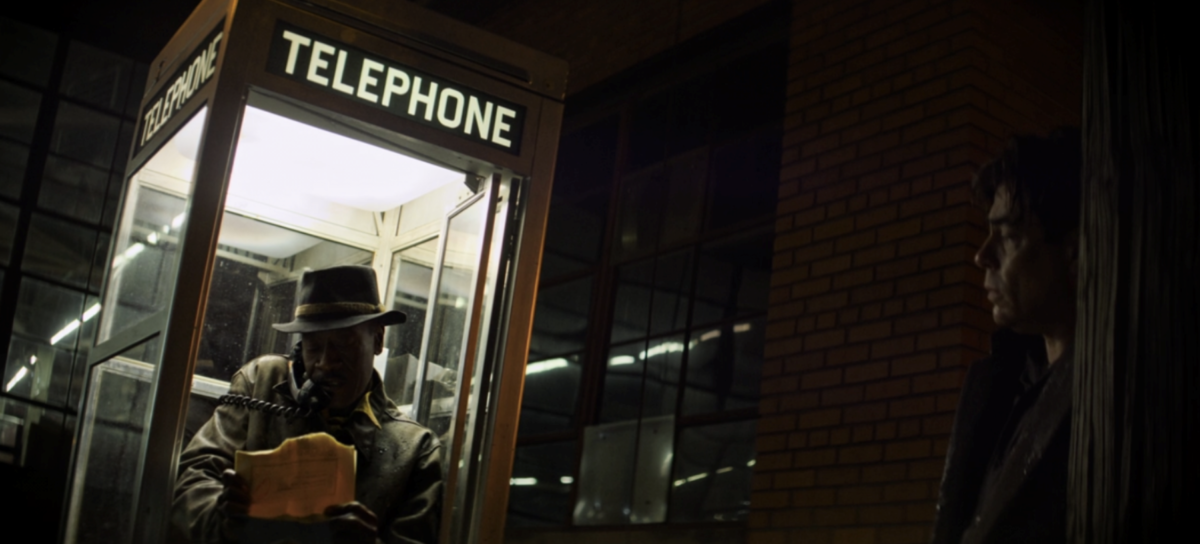
His whole career is a fascinating cross-section of the last 30-plus years of the film industry. He’s ridden many waves and slips in and out of the Hollywood machine at will. He won the Palme for his debut, Sex, Lies, and Videotape (1989), and hastened the rise of American independent cinema in the early-’90s. He then went through a wilderness period out of the gate — Kafka (1991), Schizopolis (1996), Gray’s Anatomy (1996), et al. — reconfigured and climbed the ladder — Traffic (2000), Erin Brockovich (2000), the Ocean’s Eleven trilogy (2001-2007) — and cashed in on prestige pictures — The Good German (2006), Che (2008). The closest he has to consensus masterworks are his whip-smart late-’90s films The Limey and Out of Sight, and you could argue he benefits from not having the gravitational pull of an avowed calling card. His arc in the 21st century hasn’t been linear; it’s actually an irresistible hodge-podge of experiments. And, yeah, he threw in a short-lived fake retirement in the middle of this run. He doubled back into hybrid studio/independent genre riffs — Contagion (2011), Haywire (2011), Magic Mike (2012), Side Effects (2013) — dabbled in lo-fi one-offs — Bubble (2005), The Girlfriend Experience (2009) — ventured into TV and stretched the medium — The Knick (2014-2015), Behind the Candelabra (2013), Mosaic (2017-2018), Girlfriend Experience offshoot (2016-2021) — and has done the streaming thing — High Flying Bird (2019), The Laundromat (2019), Let Them All Talk (2020), and now, No Sudden Move.
No Sudden Move — unceremoniously dropped straight into the HBO Max slipstream and seemingly quickly forgotten — is a sepia-toned, offbeat crime film that is slyly experimental. It’s a remarkable exercise because it revels in its mid-century period detail, its twisty plotting, its showy performances, and its considerable entertainment value, but Soderbergh makes the confounding choice to distort all this obsessed-over craft through an extreme wide-angle lens. You can literally see the glass between the camera and the action. The corners of the frame are darkened. The vignetting of the lenses is always apparent. When characters venture too far afield, there’s fall-off. Characters that are not standing dead-center curl, blur, and thin. The backdrop ripples whenever the camera pans. It’s not quite as in-your-face as it sounds, but it is frequently disorienting and lightly psychedelic. And as the tension builds, the edginess and imbalance of the environments becomes more pronounced. No Sudden Move is an unexpected left turn. Soderbergh doesn’t go the linear path of seeking out the next mass-market technology and make it cinematic. Instead, he augments a more straightforward shooting style and makes it feel alien.
No Sudden Move drops the audience in the middle of a shapeshifting world. It’s 1954 in Detroit. Curt Goynes (Don Cheadle), fresh out of prison, strides down the street. The bold red font of the title across the deep blue dawn marks this as pure pulp from the start. Black-and-white photos flash across the screen, memories, presumably, of a lineage all but erased from the city. The tragic fate of the Black Bottom neighborhood — then in the process of being wiped off the map by “red-lining,” soon to be demolished and replaced by Lafayette Park and the freeway — fuels Curt’s actions throughout the film. As he strolls in profile against a rundown factory building, the world around him morphs; the rows of busted-up windows and brick seem to spin and breathe behind him. This barrel effect crops up repeatedly throughout the film as a signature and a motif. This is a world seen through a particular lens, from a vantage; it has been mediated for you. The camera lens is a character in No Sudden Move.
Curt arrives at a local barbershop, clearly a front. He gets word that his services are requested. Skeptical, he meets with the handler, the put-upon go-between Doug Jones (Brendan Fraser). Jones hooks him up with two other recruits, Ronald Russo (Benicio Del Toro) and Charley (Kieren Culkin). The job: the three break into accountant Matt Wertz’s (David Harbour) house and “babysit” his wife (Amy Seimetz) and kids while Wertz is taken to retrieve a certain something of value from his boss’ safe. For a number of reasons, the job goes wrong. The MacGuffin is not in the safe, Charley is a wild card, and something is off about the job from the start. The balance of the movie follows Goynes and Russo desperately improvising and dealing up the food chain to extricate themselves from a setup.
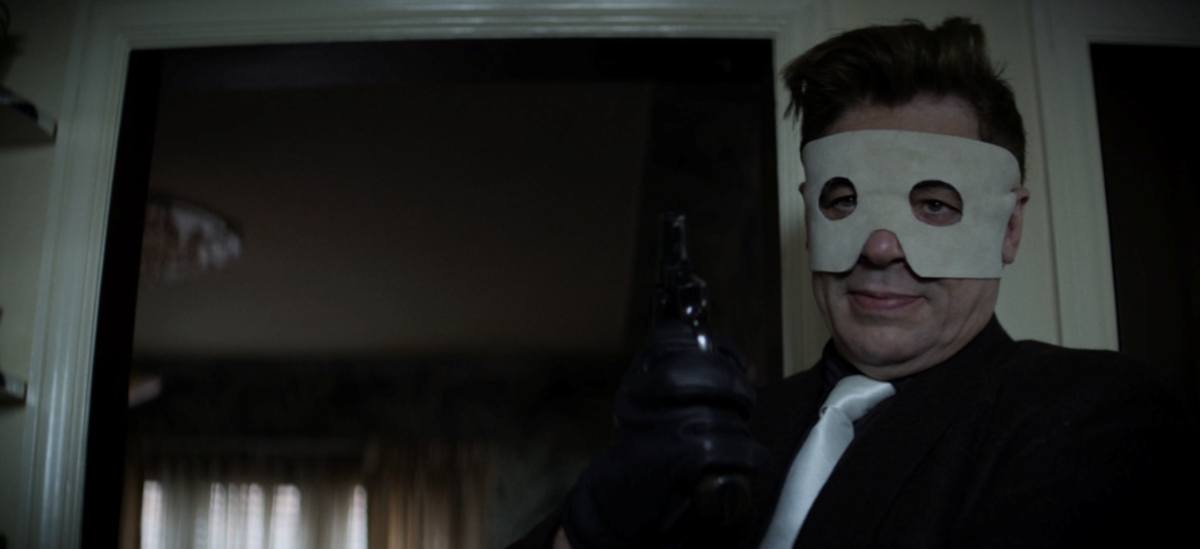
The earliest filmmakers were tinkerers, entrepreneurs, engineers. Process over product was the name of the game. Soderbergh has literally repeated this refrain throughout his career. He has a kinship with the technologists, the experimenters, and the lab-rats. His approach is a postmodern extension of the primordial era of filmmaking. With No Sudden Move, Soderbergh set out to evoke an era without recreating an era; he wanted to keep some distance from it, to point out its artifice, to fold over the then and now. Even when Soderbergh is willfully keeping the audience at arm’s length, his instincts for propulsive, serpentine plotting never falter. But there are frustrating moments, when it seems as if characters have gone afield and they and their actions are obscured, where the staging feels like an extension of the apparatus over the narrative. No Sudden Move reminds me of Andrew Dominik’s Killing Them Softly (2012), another cerebral, stylized crime film with star power that utterly confuses audiences. Like that film, No Sudden Move has political undertones and a bunch of wry, self-conscious conversations about the pretzel logic of the plot. Both movies are about desperation and hierarchies. And both movies have a scene where Ray Liotta is brutally beaten against his car in the pouring rain.
Twisty, sophisticated, and hard-boiled, No Sudden Move has many of Soderbergh’s greatest hits: double-crosses, webs of deceit, misdirection, and shifting allegiances. His movies have shells within shells, systems beneath systems, employers who are employees of other employers. All of this is intact in No Sudden Move. The visuals are already hemmed in by the lensing phenomena, but the claustrophobia is enhanced by the compositions. Objects and bodies frequently block our view. Many shots have a shallow focus, and sometimes the racks are not especially sharp. There are a lot of canted angles and twisting push-in shots. Vertical lines dominate the set designs and accentuate the warp on doorways, windows, and wallpaper patterns. It gnaws at the back of your mind like peering at an optical illusion at length.
There’s a pervasive sense of this plot taking place in the shallow end of the pool. An 11th-hour uncredited cameo from Matt Damon — as Big Four exec Mike Lowen — hints at the larger playing field. The condescension, the antipathy, the racially charged double-speak on display in this scene deepens the thematic interests of the film late in the game. Inevitably, the bundle of cash he forks over to Goynes and Russo makes its way back to him, plus interest, delivered by crooked investigator Joe Finney (Jon Hamm) after brokering a deal with kingpin Aldrick Watkins (Bill Duke, The Limey, High Flying Bird). For all its knotty neo-noir machinations, by the end, No Sudden Move feels of a piece with Soderberg’s superb agriculture price-fixing farce The Informant! (2009), thematically if not tonally. From his biggest blockbusters to his most austere indies, Soderbergh’s films are nearly all, in one form or another, about the mechanics of capitalism. There are the surface pleasures and the superstructure. It’s always there, a great wheel that grinds away below the surface, and Soderbergh orchestrates how much we see of it and our relationship to its influence. In No Sudden Move, the plot turns on a MacGuffin, but it’s an odd sort of prize. It’s simply a blueprint for a catalytic converter, a more efficient, environmentally sound car exhaust technology. No one understands the specifics of how it works and each party’s interest in it is relatively opaque. It’s a device and the characters acknowledge its value in transactional terms. Or, as Frank Capelli (Liotta) says, “You were hired to steal some car shit. You stole some car shit. Why are you even here?” But it’s also a real technology and it was actually suppressed and the ripple effects from 1954 to now are incalculable. Ultimately, there is an irreconcilable gap between the plot implications and the greater societal relevance. Soderbergh wants this chasm to be glaring.
During principal shooting, the decision was made to widen the image masking to the unusual ratio of 2.16:1, slightly taller than the traditional anamorphic ratio, so that the warp at the edges of the anamorphic image — typically cropped out — are instead part of the composition. Soderbergh says he wanted to “embrace the inherent anomaly” of the Kowa Prominar Lenses fitted on a Red Monstro digital camera. This choice to seek out the widest-angle lenses he could get his hands on, and fit them on a digital sensor that is a larger format than the lenses were designed for, is an extension of his adventures in iPhone cinematography. He’s importing the off-kilter, deliberately imperfect image-craft he developed during his Unsane/High Flying Bird experiments into this return to a more conventional digital capture. And the freewheeling approach to composition and visual rhythm has the obvious imprint of Soderbergh’s fly-by-night TV work. The armchair cinematographers on the internet choose their corners, finding it either intriguing or insufferable. It’s jarring enough that, when it does happen, it makes you wonder if something is wrong with your set. The mode of production, the cost of it, the practicalities of assembling a crew, and the layers of artistic choices that go into building a product — all of these are at the forefront in Soderbergh’s filmography, more directly accessible for the audience, rather than subsumed. His films are emulsions; eventually the layers separate and settle. In No Sudden Move, he’s testing the planar surface of the screen, reorienting moviemaking as a technological achievement, hybridizing cinematic style, and dulling the allure of escapist entertainment. Strip away the plot, the themes, the context of its creation, and even Soderbergh himself, and you arrive at No Sudden Move’s irreducible element: this is a film that delights in the extraordinary phenomenon of moviemaking, of light ricocheting through layers of cut glass.
Stream No Sudden Move on HBO Max
(Split Tooth may earn a commission from purchases made through affiliate links on our site.)

